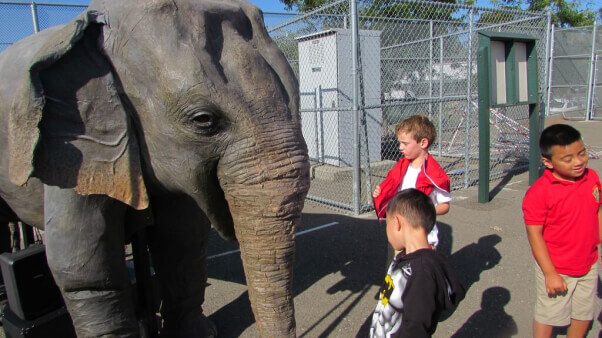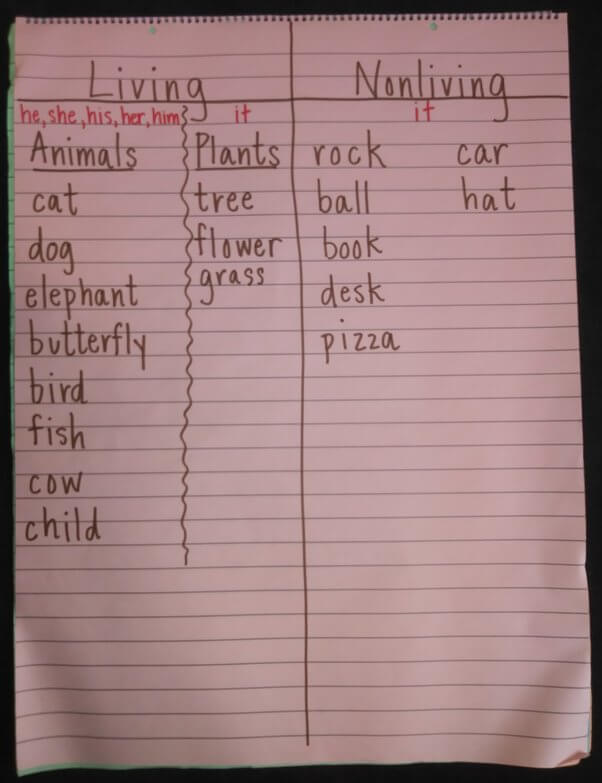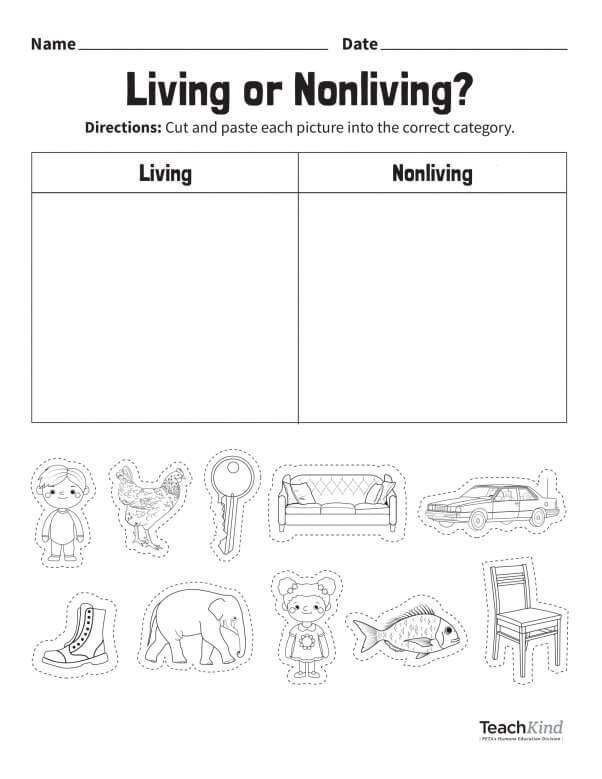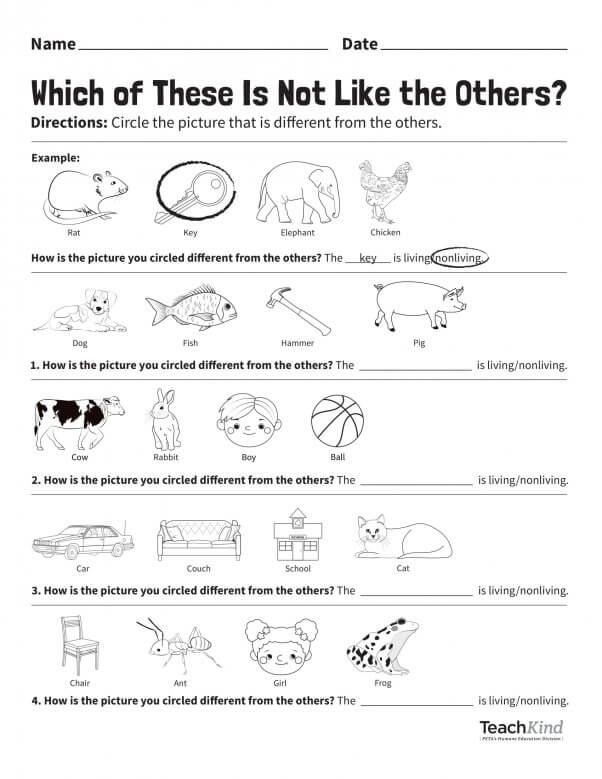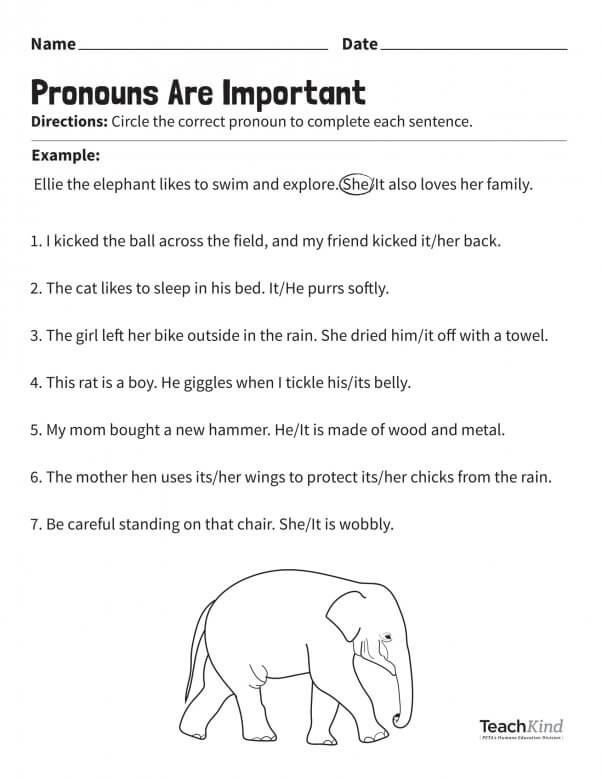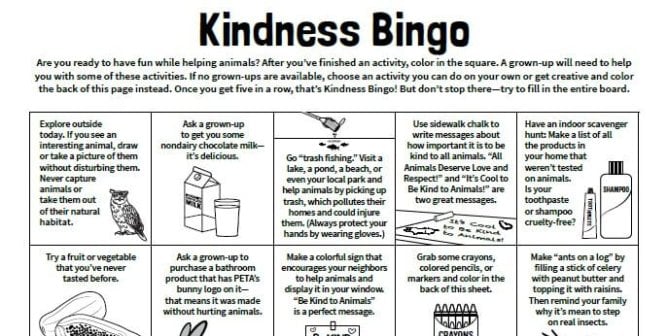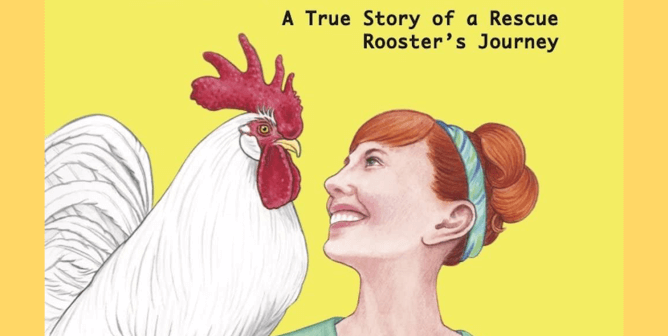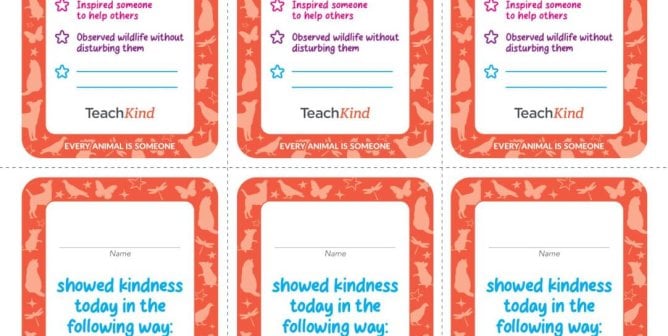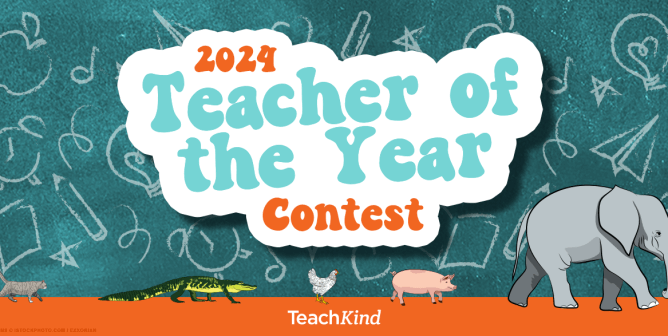Someone, Not Something: Pronouns Are Important (Grades K–2)
Thousands of schoolchildren across the country are getting the opportunity to meet and interact with a “recently freed elephant,” thanks to PETA’s walking, talking 6.5-foot-tall robot named Ellie, whose larger-than-life personality and message of compassion are captivating—and empowering—young audiences.
Ellie introduces herself as “an ambassador for all animals.” Her mission? To inspire kids to see past the differences between humans and other animals and to treat all sentient beings—regardless of their species—the way they wish to be treated. Her powerful presentation highlights the necessity of cultivating empathy for others and reminds students that bullying is never acceptable. It’s also an excellent springboard for the following lesson on distinguishing between living, feeling beings and nonliving things and on using personal pronouns when referring to other animals. Use these resources to discuss with students the importance of acknowledging that other animals are individuals with thoughts and feelings and of choosing inclusive language when talking about them.
Are you teaching virtually? Your students can experience Ellie’s presentation from the safety of their homes with this interactive video:
If you haven’t already covered the difference between living beings and nonliving things with your students, begin by explaining these concepts using a T-chart. Label one of the columns “Living” and the other “Nonliving.” Then have students provide examples for each group. (Note: If students provide plant examples for the “Living” category, divide the column into two sections to distinguish between plants and animals. See the image below for reference.) Make sure students suggest humans (boy, girl, teacher, etc.) as well as other animals, including fish and insects, for the “Living” column. If necessary, pose questions like “What about ants? Are ants living or nonliving?” If students are unsure, keep a running list of these examples and place them in the correct category after discussing the differences between living beings and nonliving things. Once you’ve created a list of about 10 examples in each column, use the following talking points to discuss the characteristics of each group.
- Ask students what all the living beings on the T-chart have in common. (Possible answers: All living beings grow and require an energy source—food in the case of animals and sunlight in the case of plants—water, and air. All living beings respond to changes in their surroundings—e.g., animals seek warmth in the winter and avoid danger, while plants grow toward the sunlight and their roots seek water.)
- Ask students what all the nonliving things on the T-chart have in common. If students struggle to generate responses, ask them to identify the differences between the living beings and the nonliving things on the chart (e.g., Do the nonliving things grow? Do they require energy, water, or air?).
- Remember to revisit any examples that students were uncertain about and place them in the correct category.
Next, above the “Animal” column, write the pronouns “he,” “she,” “his,” “her,” and “him.” Explain to students that we use these words when talking about living beings who are animals—and that humans are also animals. Remind them that they probably refer to their animal companions at home as “he” or “she” because they’re individuals with thoughts and feelings—not nonliving things—and that we should refer to all animals in this way. Provide an example (e.g., Ellie the elephant likes to swim and explore. She loves her family.).
Then, above the “Plant” and “Nonliving” columns, write the pronoun “it.” Explain to students that we use this word both when talking about nonliving things, which don’t have thoughts or feelings, and when talking about plants—because although they’re alive and shouldn’t be harmed unnecessarily, they don’t have thoughts or feelings, either. Provide examples (e.g., The dish broke, so I threw it away. The sunflower is tall. It has yellow petals.). Leave the T-chart available for students to refer to as they complete the activity packet below, and review and discuss the answers as a class.
Note: This activity focuses on using traditional singular personal pronouns. Use your professional judgment to determine whether your students are ready to use “they” and “them” as singular personal pronouns to refer to individual animals whose sex is unknown. Additionally, the scientific community is just beginning to recognize plants’ advanced capabilities, and we now know that they experience a variety of sensations. Whether it can be proved that they experience pain or not, a vegan lifestyle is the compassionate choice because it requires the deaths of fewer animals and plants. Learn more about plants and their advanced capabilities here.
The language that we use when talking about animals has the power either to combat speciesism or to reinforce this misguided and harmful belief that other animals are inferior to humans. Challenge your students—and yourself—to make a permanent habit of referring to animals using personal pronouns by creating a classroom “It” Jar. Every time someone slips and calls an animal “it,” drop a marble into the jar. If you and your students can stay below a certain number of marbles during a predetermined length of time, reward yourselves for being sensitive to animals!
TeachKind has several lessons, activities, and resources to teach students to use animal-friendly language. Make these important lessons an integral part of your English language arts curriculum to promote inclusivity, compassion, and empathy for all living beings in your classroom.
- Grammar Packet: Compassionate Nouns and Verbs Worksheets
- Animal-Friendly Idioms Classroom Posters
- Nouns: Animals Don’t Belong in the “Thing” Category
Stay up to date on all the latest animal-friendly content from TeachKind by signing up for TeachKind News:
By submitting this form, you’re acknowledging that you have read and agree to our privacy policy and agree to receive e-mails from us.
